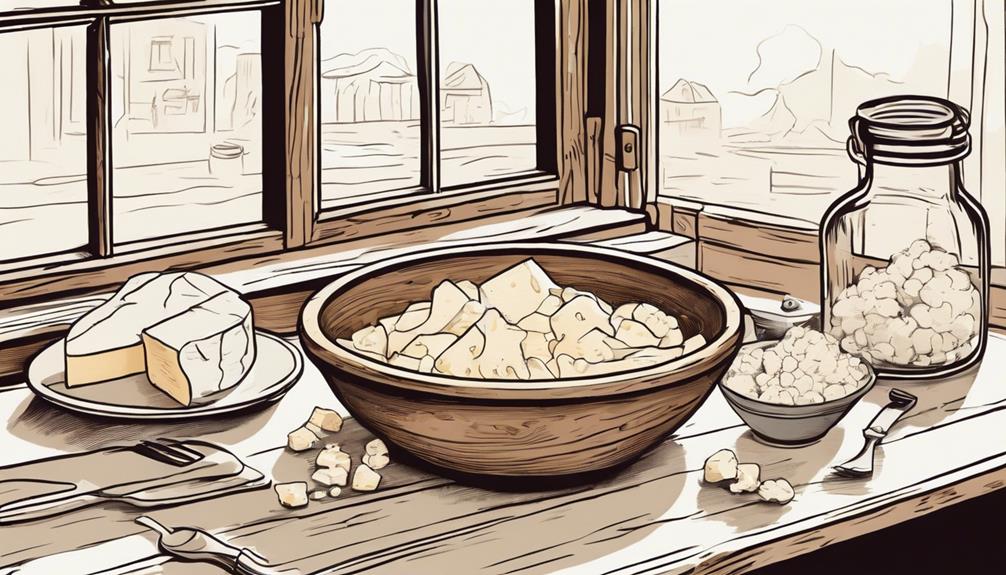How To Become More Self-Sufficient Without Starting a Full-Blown Farm…
Want to start preserving your harvest, making your own soap, or building a backyard root cellar — but not sure where to begin? “Homesteading Advice” gives you instant lifetime access to 35+ practical homesteading books on food preservation, veggie gardening, DIY natural cleaning products (save over $250 per year with this skill alone), brewing, off-grid energy, and a whole lot more…
Click Here To Check It Out Now!
“I’ve been trying to perfect my homemade cheese recipe, but I keep running into an issue where my curds are consistently too wet. This makes it really tough to get a nice cheese texture and I feel like I’m wasting a lot of good milk. Could you offer some advice on how to handle overly wet curds? I’m based in Melbourne and making cheese in my small kitchen isn’t always the easiest!” Thanks a bunch, Linda, Melbourne, Australia.
How Do I Handle Curds That Are Too Wet?
Hey Linda! It sounds like you’re really diving into the wonderful world of cheese making, which is fantastic. Dealing with wet curds can be a bit tricky, but it’s definitely something we can tackle together. Here’s a detailed look at the why’s and how’s of handling overly wet curds in cheese making.
Understanding Why Curds Are Too Wet
First things first, let’s explore why your curds might be too wet. Wet curds usually indicate that they haven’t expelled enough whey, and there are several reasons this might happen:
- Insufficient cutting: If curds aren’t cut small enough, it’s harder for them to release whey.
- Too low cooking temperature: This can prevent whey from being expelled properly.
- Improper stirring: If curds don’t get stirred enough, they might hold onto more whey.
- Incorrect acid development: Proper acidity helps curds to form and expel whey efficiently.
Steps to Fix Wet Curds
So, what can you do to ensure your curds are the right consistency? Here are some steps you can try:
- Adjust Cutting Size:
Ensure you cut the curds to the right size. Smaller curds will release whey more easily. Generally, 1/4 to 1/2-inch cubes work best depending on the type of cheese you’re making.
- Manage Heat Properly:
The temperature you cook your curds at is critical. Gradually heat your curds to the desired temperature, usually around 90-105°F for most cheeses. Increasing heat too quickly can result in uneven curd formation and retention of too much moisture.
- Stirring Technique:
Regular gentle stirring helps curds release whey consistently. Be mindful not to break the curds too much during stirring. Using a slotted spoon, stir them slowly and gently, ensuring all curds are exposed evenly to the heat.
- Check Your Acid Levels:
Acidify your milk correctly. Let your culture work long enough to develop proper acidity before adding rennet. You can use pH strips or meters to monitor the acidity level, aiming for a pH between 6.5 and 6.7 before adding rennet.
- Pressing the Curds:
If your curds are still too wet after draining, consider pressing them with a bit more weight. Start gradually and increase the weight if necessary. This can help expel residual whey.
- Extend Draining Time:
After cutting the curds, allow them to drain for a longer period. You can extend the draining time in cheesecloth or a colander, letting gravity do its work.
Troubleshooting Tips
If you find that your curds are still too wet after making these adjustments, don’t worry; there are additional troubleshooting steps you can take:
- Use Calcium Chloride:
Adding calcium chloride to your milk can help curd formation, especially if you’re using pasteurized milk. Typically, using 1/4 tsp of calcium chloride per gallon of milk will improve the firmness of your curds.
- Check Milk Quality:
Higher quality, fresher milk often yields better curds. Try experimenting with different milk sources to see if this influences your curd consistency.
- Review Recipe Specifics:
Sometimes, following a specific recipe to the letter can make all the difference. Pay close attention to the process and ensure all steps are followed precisely. Small deviations can impact the final product.
- Inspect Equipment:
Make sure all your equipment is sanitized and functioning properly. Impurities or faulty thermometers can sometimes affect the cheese-making process.
The Importance of Patience
Cheese making is both an art and a science, requiring a generous dose of patience. Sometimes, even when we follow all the guidelines, things don’t go exactly as planned. Learning from each batch, observing how your curds react to different variables, and making adjustments accordingly is a key part of the process.
Tips for Specific Cheese Types
The type of cheese you’re making can also influence how you should handle wet curds. Here are a few examples:
- For Cheddars:
Try the cheddaring step, which involves stacking the curds to help expel whey. This method might help if your curds are particularly wet.
- For Mozzarella:
Stretching the curds can help with moisture reduction. Ensure you heat the curds to the proper temperature for stretching, typically around 170°F.
- For Soft Cheeses:
With cheeses like brie or camembert, it’s okay for the curds to be a bit wetter. Keep this in mind, as some recipes rely on higher moisture content.
Linda, remember that achieving the perfect curd consistency often takes some experimenting. Keep a detailed record of each batch you make, noting any changes and results. This will help you understand what adjustments yield the best curds for your specific conditions.
Final Thoughts…
Thanks for your question, Linda! Handling wet curds can indeed be challenging, but with the right adjustments and a good bit of patience, you’ll be well on your way to making the perfect homemade cheese. Remember, the key areas to focus on are curd size, cooking temperature, stirring technique, and proper acid development. Happy cheesemaking!

